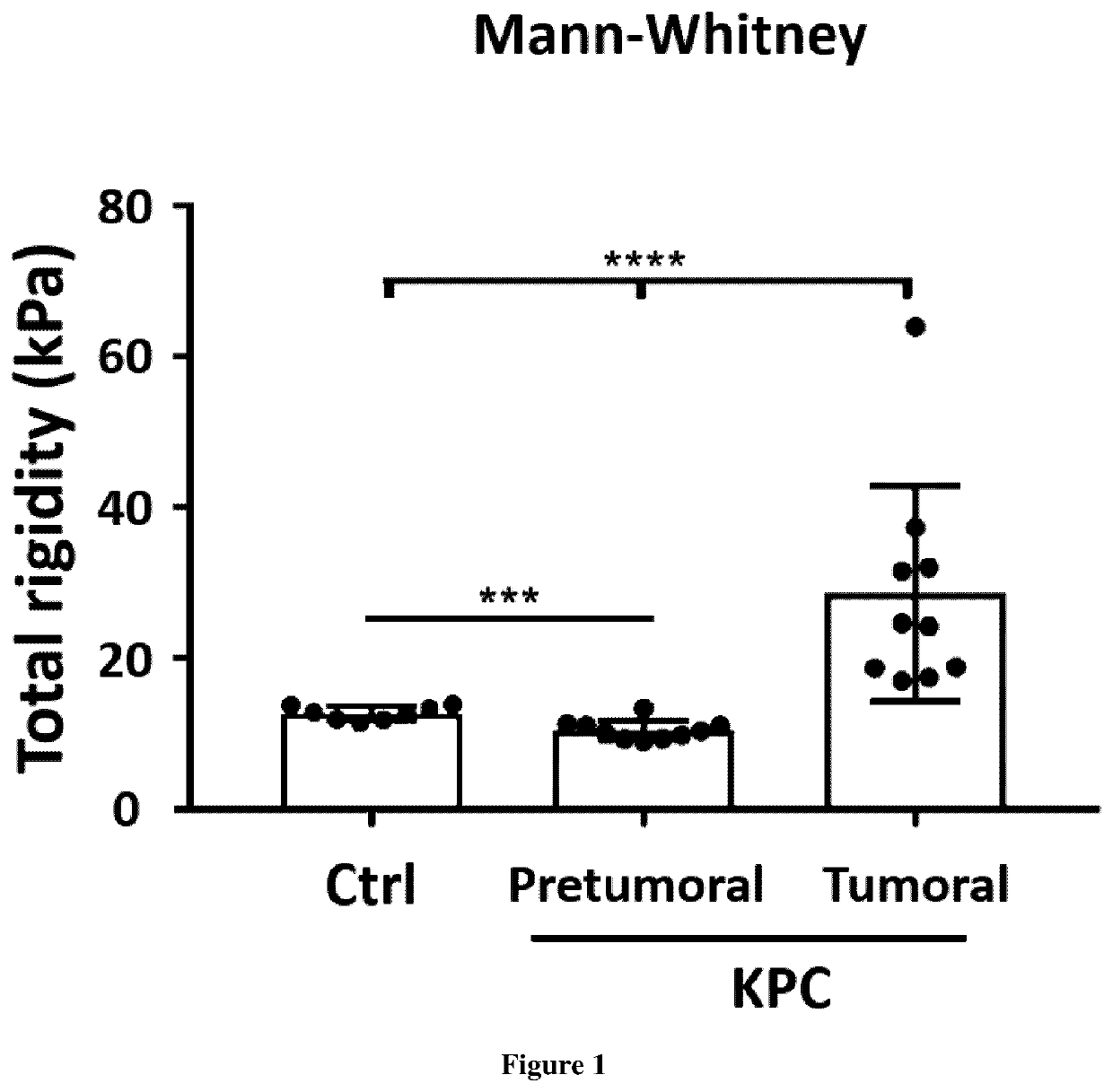Use of ultrafast elasticity imaging for detecting pancreatic cancers
a pancreatic cancer and ultrafast elasticity technology, applied in the field of oncology, can solve the problems of insufficient quantitative measurement, lack of therapeutic options and early treatment efficiency, and heterogeneous pancreatic cancer
- Summary
- Abstract
- Description
- Claims
- Application Information
AI Technical Summary
Benefits of technology
Problems solved by technology
Method used
Image
Examples
example
Material & Methods
[0018]Animals and Ethical Requirements
[0019]The LSL-KrasG12D and LSL-p53R172H knockin (from D Tuveson, Mouse Models of Human Cancers Consortium repository (NCI-Frederick, USA), Pdx1-cre (from DA Melton, Harvard University, Cambridge, Mass., USA) strains were interbred on mixed background (CD1 / SV129 / C57B16) to obtain compound mutant LSL-KrasG12D; LSL-p53R172H; Pdx1-Cre (named KPC). Littermates not expressing Cre as well as Pdx1-Cre of the same age were used as control. All procedures and animal housing are conformed to the regulatory standards and were approved by the Ethical committee according to European legislation translated to French Law as Décret 2013-118 1 Feb. 2013 (APAFIS 3601-2015121622062840). Genotyping was performed using primers as described in (31) and analyzed with Fragment analyzer instrument (AATI) with dsDNA 910 Reagent kit, 35-1500 bp (AATI). Blood counts (from EDTA tubes Microvette #16.444, SARSTEDT AG & Co) were performed using Yumizen H500 he...
PUM
 Login to View More
Login to View More Abstract
Description
Claims
Application Information
 Login to View More
Login to View More - R&D
- Intellectual Property
- Life Sciences
- Materials
- Tech Scout
- Unparalleled Data Quality
- Higher Quality Content
- 60% Fewer Hallucinations
Browse by: Latest US Patents, China's latest patents, Technical Efficacy Thesaurus, Application Domain, Technology Topic, Popular Technical Reports.
© 2025 PatSnap. All rights reserved.Legal|Privacy policy|Modern Slavery Act Transparency Statement|Sitemap|About US| Contact US: help@patsnap.com

